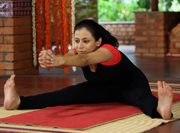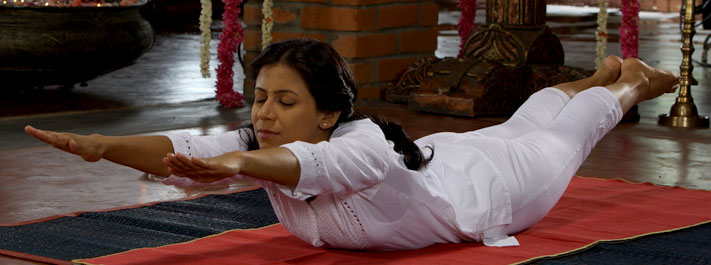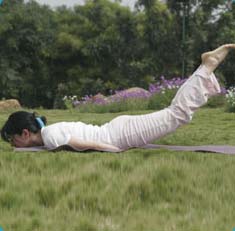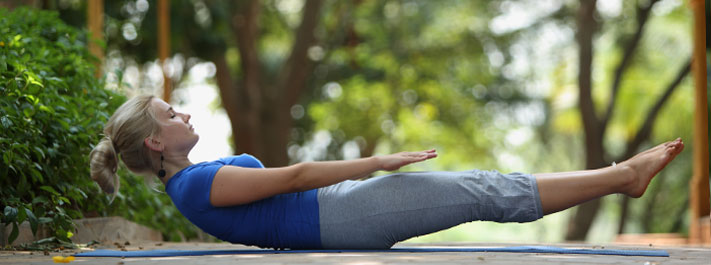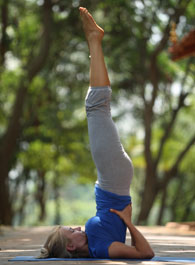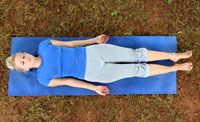Chakki = Grinder, Chalana = to drive, Asana = Posture or Pose
Chuh-key-Chuh-LAANA-AAHS-uh-nuh
This yoga posture mimics the movements of a hand-moved wheat grinder, common in the villages of India. It turns out to be a fun and excellent workout for the body!
This yoga posture mimics the movements of a hand-moved wheat grinder, common in the villages of India. It turns out to be a fun and excellent workout for the body!
How to do Mill Churning Pose (Chakki Chalanasana)
1. Sit with your legs splayed apart.

2. Clasp your hands and outstretch your arms at shoulder height in front of you.
3. Takea deep breath in and start moving the upper part of your body to the front and right, forming an imaginary circle with your body.
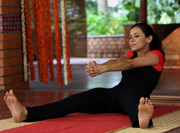
4. Inhale as you go forward and to the right, and exhale as you go backword and to the left.

5. Keep breathing deeply and easily while rotating. Do you feel the stretch in the arms, abs, groin and legs?
6. Make 5-10 rounds in one direction and then repeat in the opposite direction. Your wheat flour is ready to be cooked!
- A good preventive for sciatica
- Tones the back, abs and arm muscles
- Opens up the chest and groin
- Tones the uterine muscles in females, so it is very useful in preventing painful cycles if practiced regularly
- Consistent practice helps reduce abdominal fat
- Also very useful in reducing post-delivery fat (however, please consult your doctor before practicing this yoga posture)
Contraindications
Do not practice this asana if you are pregnant, have low blood pressure, extreme lower back pain due to slip disc, headaches or migraine (during the attack), or had a recent abdominal surgery, such as for active hernia.

